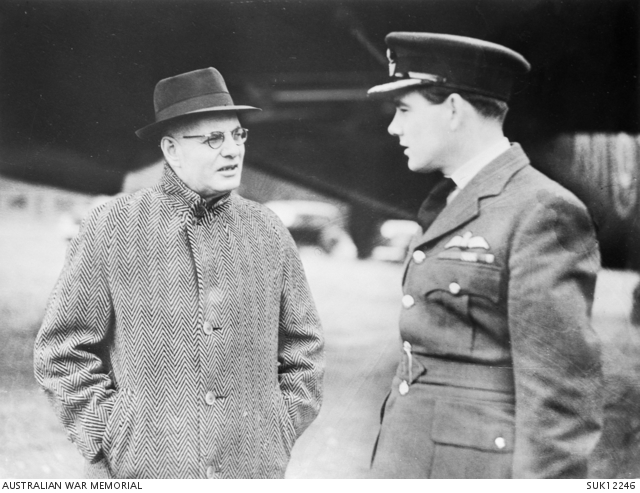Fifty Australians - Sir Hughie Edwards
An air force hero who became Governor of Western Australia. Edwards was a highly decorated airman whose awards included the Victoria Cross for a low-level attack on the port of Bremen.
Air Vice Marshal Sir Hughie Idwal Edwards, VC, KCMG, CB, DSO, OBE, DFC (1914–1982)
Edwards joined the RAAF when he was 21. Following pilot training he transferred to the RAF in Britain under a pre-war arrangement. Another to do this was Air Vice Marshal Don Bennett, regarded as the founder of the Path-finder Force. “It was ironic that the two most successful Australian air commanders in Europe earned their reputations as members of the RAF,” noted an air force historian.
In Britain Edwards was posted to a bomber squadron in 1936. Two years later he was badly injured in a plane crash and did not resume flying until the war began. In May 1941 he was appointed to command No. 105 Squadron RAF; he undertook attacks on Germany and the occupied countries, and on enemy shipping.
On 4 July 1941 Edwards led 12 twin-engined bombers in a low-level attack on the heavily defended port of Bremen. The aircraft had to fly under high-tension wires, through a balloon barrage, and into intense fire. All his bombers were hit, and four were shot down. For his gallantry and determination, Edwards received the Victoria Cross.
Edwards continued to lead his squadron against major targets, and was further decorated; his combination of awards marked him as one of the war’s outstanding pilots. In February 1943 he became Commanding Officer of RAF Station, Binbrook, resuming his association with the RAAF as No. 460 Squadron RAAF operated from the base flying Avro Lancasters. (“G for George”, the centrepiece of the Memorial’s Striking by night program in ANZAC Hall, was one of these.)
After the war Edwards continued his career in the RAF. By 1962 he was Director of Establishments of the Air Ministry in London. Eventually he returned to Australia. He was Governor of Western Australia (1974–75) and was knighted, later retiring because of ill-health.
Wing Commander Edwards, with his wife and mother-in-law, after his Victoria Cross investiture at Buckingham Palace in February 1942.
In May 1944 the Australian Prime Minister, John Curtin, met with Edwards during a visit to No. 460 Squadron RAAF at Binbrook, in Lincolnshire.
- Home
- Previous: Graham Edwards
- Next: Pompey Elliott

